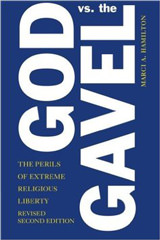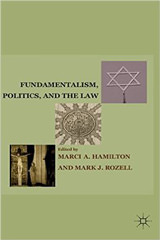The sickening pattern is right there on our homepages and front pages almost every day: universities, schools, teams, and leagues have fostered the perfect conditions for numerous children to be abused. We knew what it took for this to happen due to the massive example from the Catholic Church hierarchy’s misdeeds: (1) treat reports of child sex abuse as a nuisance, rather than a disaster; (2) let abusers have free rein within the system to get access to more children; and (3) vigorously, even ruthlessly, protect the organization’s “brand” and reputation. Until recently, these institutional responses were standard operating procedure, and manna from heaven for abusers.
Once the pattern revealed itself, we saw it in a dizzying array of settings, wherever children were in the picture. The public, especially parents, are now demanding a dramatic turnaround in our culture, so that children’s needs come first, and institutions are held to account. In this column, I will focus on the child sex abuse problem as it manifests itself in the context of sports, and prescribe the approach that universities, schools, and athletic organizations need to adopt to ensure greater protection of children now, and into the future.
Every university, school, and sports organization needs to adopt a Coaches Code of Conduct obligating both coaches and the organizations themselves, which spells out what is expected. The absolute starting point must be that every coach and volunteer must undergo a criminal background check before being hired, and every two years thereafter. Here are the other most important elements that such a code ought to include:
We Need to Define What Is Abuse, From Sexual to Verbal
Under the criminal law, institutions and organizations may not intentionally or knowingly permit conditions that lead to the perpetration of crimes, such as sexual abuse or acts resulting in serious physical harm. Institutions and organizations are also liable for civil damages for negligently hiring, supervising, and retaining employees and volunteers who sexually abuse or physically harm children. These legal precepts establish the absolute minimum requirements.
But that is not all. Institutions and organizations are also liable in this era for other forms of abuse that do not rise to the level of criminal acts, but are still wholly unacceptable. These include sexual harassment, hazing, bullying, and emotional abuse. Organizations and institutions, therefore, must explicitly prevent employees, coaches, and volunteers from engaging in these behaviors. The coach who watches a boy being beaten up by a team member, or permits another teammate to attack one of the girls on the team is creating liability for the organization, not to mention, of course, doing the wrong thing morally.
Coaches who verbally and emotionally abuse their players also are engaging in forbidden abuse. My daughter is an athlete, and I have watched coaches on other teams publicly berate physically fit girls by calling them “fat cows” or “stupid” when the game was not going their way. Another coach at a major university is known for his sexist and racist rants.
Parents and athletes are afraid to call such coaches to account, especially if the coach is a winning one, because doing so will result in retaliation against the player, in terms of playing time, access to college coaches, and team selection. Thus, organizations and institutions have an obligation to rein in such coaches, and if they repeatedly engage in such behavior, to bar them from the sport. The failure to bar them is a direct pathway to lawsuits.
Organizations also need to explicitly ban discrimination based on race, and gender (setting aside, for the moment, the ability to have teams based on gender). Universities in particular are liable under Title VII and Title IX for discrimination against employees and players. Some coaches coming from other countries do not readily understand or share our vital American values of anti-discrimination, and so organizations must be extra-vigilant in hiring anyone who hails from a different cultural setting who will be dealing with children and young athletes.
Hotline Reporting within the Organization, and Backup Support for the Athletes
Every organization should set up a toll-free hotline for the reporting of any type of abuse from athletes, parents, and friends, and reports should be able to be made anonymously. The organization has an obligation to have a committee or procedure in place to investigate such reports, and it should keep a record of all such calls, so as to be able to identify patterns of behavior that signal abuse.
In addition, the organization needs to provide an independent, neutral, third-party person to talk to athletes who are troubled by abuse. This person (or non-profit organization) should be available by phone or at least via an answering service 24/7, and should be someone in the “helping professions,” e.g., a psychologist, psychiatrist, or teacher, who is a mandated reporter of criminal abuse and who has been trained on how to deal with abused children, and where and how to report criminal abuse to the authorities.
Mandatory Reporting of Criminal Abuse to the Authorities
There should be a belt-and-suspenders approach to reporting criminal behavior to the authorities. All employees, coaches, and volunteers in the organization should be required to report criminal abuse to the authorities, on pain of temporary or permanent suspension for failure to report. As we have learned the hard way with religious organizations, you must cut out the cancer of abuse in an organization or suffer serious consequences, and delegating the punishment of crimes to the police, rather than solely taking internal measures, is a big part of putting the organization on a secure and healthy footing.
The organization should also provide training on how to report criminal abuse and how to spot abuse for every employee, coach, and volunteer. The gold standard of training in this context has been set by the National Child Protection Training Center. Training should take place at the beginning of employment and then every two years.
Organizations Involving Children Need an Electronic Communications and Social Media Policy
Organizations involving children and young adults also need to adopt an electronic and social-media policy. Under such a policy, all electronic communications between, for example, a coach and an athlete must be professional in nature, and must occur for the purpose of communicating information about the team. Coaches who cannot operate within these parameters should be temporarily suspended and, if it happens again, permanently suspended.
Organizations Also Need a Locker Room and Changing Area Policy
The publicity regarding Jerry Sandusky’s repellent and criminal behavior with boys in the Penn State locker rooms and showers makes it apparent that this arena must be policed by organizations as well. At a minimum, the organization must require that coaches meeting with individual minors, in locker rooms or elsewhere, must have at least one additional adult available. And there must always be adult supervision of children in locker rooms or other enclosed areas to prevent athlete-on-athlete abuse.
There Must Be Meaningful Penalties Not Just for Child Sex Abuse, but for Those Who Know of Such Abuse and Look the Other Way
For child sex abuse truly to end, organizations must monitor and meaningfully penalize those employees, coaches, and volunteers who permit or foster abuse. Temporary or permanent suspension, and barring teams from participating in tournaments or leagues for specific times, or permanently, are obvious options. In addition, leagues and organizations like the NCAA have an obligation to penalize organizations that create the conditions for abuse, just as the NCAA did with Penn State. Without meaningful penalties, no code of conduct will increase the protection of children that is being demanded in the wake of Penn State, Poly Prep, and Horace Mann.
Changing the Culture Through the Positive Coaching Alliance
A key here is changing the culture of sports by putting the athletes, and especially the children, first. That requires a transformation from sports’ serving adults’ egos and needs, to sports’ fostering the best in children’s opportunities, qualities, and characters. The Positive Coaching Alliance is the best organization to initiate this radical turn toward children’s welfare. The movement for positive coaching started in the sport of lacrosse, but the organization now offers suggestions and compelling ideas for any sport.
We need to change the world to protect our children. This is a start.










I agree with what Ms. Hamilton says, in general. The problem is that she says it over and over and over again. As I understand it (since the days of Writ), this is a regular column, in which writers address topical, interesting issues. It is not a blog, in the sense of a regular opportunity to rant about your favorite issue.
Ms Hamilton has two topics – excessive religious influence, and how excessive religious influence protects child abusers. This article marks a branch into just child abusers. Nonetheless, it’s basically a constant stream of the same few arguments. I agree with them, and they’re important but please give it a rest every now and then. I agree with Sherry Colb’s veganism arguments as much or more, but she doesn’t ALWAYS write about veganism.